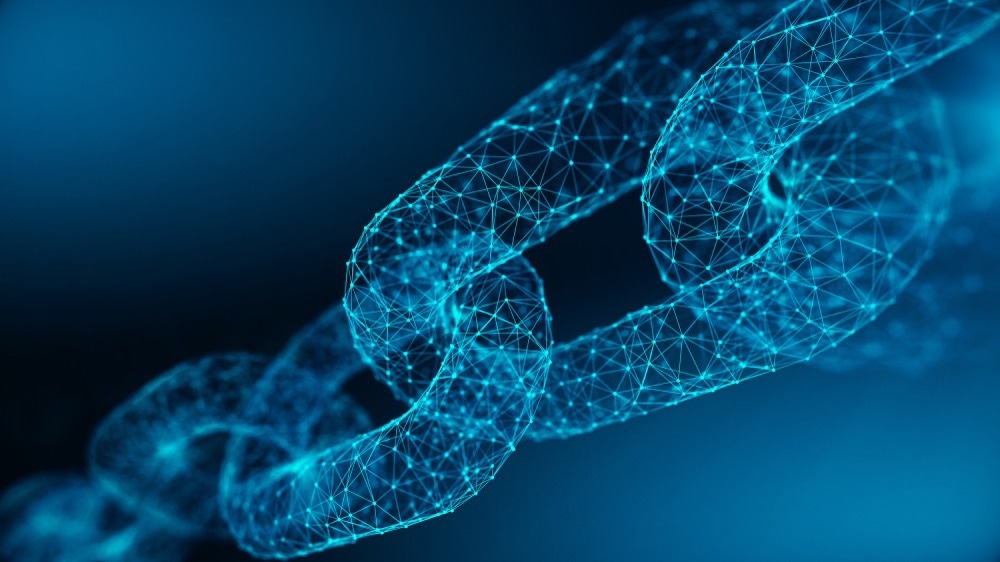Researchers from the Korea Institute for Basic Science and the Polish Academy of Sciences have utilized blockchain technology to simulate prebiotic chemical reactions on early Earth, as published in the journal Chem on January 24th, 2024.

Image Credit: Sashkin/Shutterstock.com
This work suggests that enzymes may not have been necessary for the emergence of at least some primitive forms of metabolism. It also highlights the potential of blockchain technology to address issues outside the financial sector that would otherwise necessitate the use of costly, inaccessible supercomputers.
At this point we can say we exhaustively looked for every possible combination of chemical reactivity that scientists believe to had been operative on primitive Earth.”
Bartosz A. Grzybowski, Senior Author, Korea Institute for Basic Science
Bartosz A. Grzybowski is also associated with the Polish Academy of Sciences.
To create this network, the scientists selected a set of precursor molecules - such as water, methane, and ammonia - that were probably present in the early Earth's crust and established guidelines for the kinds of reactions that might take place between various molecules.
After that, they converted this data into a computer-understandable language and utilized the blockchain to determine which reactions would take place during the course of several extensions of a massive reaction network.
The computer takes the primordial molecules and the accepted prebiotic chemistries. We coded it into the machine, and then we released it onto the world.”
Bartosz A. Grzybowski, Senior Author, Korea Institute for Basic Science
To create the network, Grzybowski's team collaborated with computer specialists and chemists at Allchemy, a company that uses artificial intelligence (AI) for chemical synthesis planning. Golem is a platform that distributes part of the computations among hundreds of computers worldwide in exchange for cryptocurrency for processing time.
The team narrowed down the initial set of over 11 billion reactions in the resulting network, which they named NOEL, or the Network of Early Life, to 4.9 billion plausible reactions. NOEL includes portions of well-known metabolic pathways, such as glycolysis, as well as close replicas of the Krebs cycle, an energy-producing cycle used by organisms, and 128 simple biotic molecule syntheses, such as sugars and amino acids.
It is interesting to note that only a small percentage of the 4.9 billion reactions that were produced could be classified as “self-replicating,” meaning that the molecules made more copies of themselves. Although it has been suggested that self-replication played a crucial role in the emergence of life, most of its recognized manifestations depend on intricate macromolecules like enzymes.
Our results mean that with only small molecules present, self-amplification is a rare event. I don’t think that this type of self-replication was operative on primitive earth, before larger molecular structures were somehow formed. We see emergence of primitive metabolism, but we don’t see self-replication, so maybe self-replication appeared later in evolution.”
Bartosz A. Grzybowski, Senior Author, Korea Institute for Basic Science
Grzybowski says, “If you asked me two years ago, I’d be thinking we’d need years for this type of work. But for a fraction of the cost, in two or three months, we finished a task of 10 billion reactions, 100k times bigger than we did previously.”
This work shows how science can be made more approachable for researchers at smaller universities and institutions, in addition to expanding our understanding of early prebiotic chemistry.
Grzybowski says, “Our system of education is based on elite universities mostly in the Western world. It’s very hard for the developing world to even compete with these universities because they don’t have access to supercomputers. But if you can distribute computing in this way for a fraction of the cost, you can give other people opportunities to play.”
Despite the fact that the network created in this work was executed on hundreds of computers worldwide, Grzybowski proposes that this technique can be applied in institutions without requiring payment in cryptocurrency tokens to the computing powerhouses.
Grzybowski says, “With a platform like Golem you can connect your institution’s network and harness the entire idle power of its computers to perform calculations. You could create this computing infrastructure without any capital expenditure.”
Grzybowski envisions that reimagining the blockchain in this manner could transform the approach to large-scale computations globally, reshaping the perception of the value of cryptocurrency in the process.
Grzybowski says, “I hope people in computer science can figure out how can we tokenize cryptocurrencies in some way that can benefit global science. Maybe society could be happier about using cryptocurrencies, if you could tell people that in the process we could discover new laws of biology or some new cancer drug.”
Source:
Journal reference:
Roszak, R., et al. (2024) Emergence of metabolic-like cycles in blockchain-orchestrated reaction networks. Chem. doi.org/10.1016/j.chempr.2023.12.009.